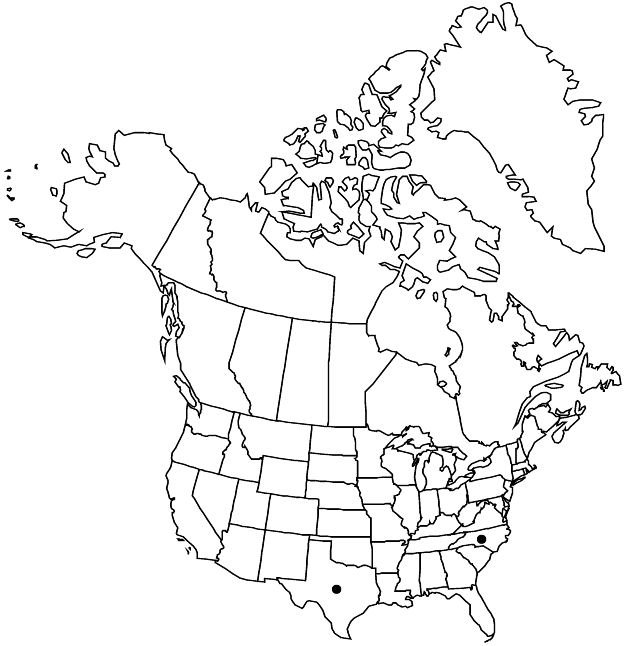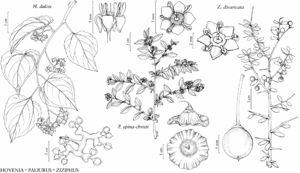Hovenia dulcis
Nov. Gen. Pl. 1: 8. 1781.
Trees, 5–10 m, branchlets glabrous. Leaves: petiole 2–4.5 cm; blade ovate, broadly oblong, or elliptic-ovate, 7–17 × 4–11 cm, herbaceous, base truncate or rarely cordate to subrounded, margins serrate, apex shortly acuminate or acuminate, both surfaces glabrous or abaxial pilose on major veins. Inflorescences usually terminal, rarely axillary, 50–80-flowered. Flowers 6–8 mm diam.; petals 2.4–2.6 mm. Capsules purplish to black at maturity, subglobose, 6.5–7.5 mm, glabrous.
Phenology: Flowering May–Jun.
Habitat: Cliff bases, suburban woodlots, thickets.
Elevation: 100–300 m.
Distribution

Introduced; N.C., Tex., Asia (China, Japan, Korea, Thailand), introduced also in South America (Argentina, Paraguay).
Discussion
Hovenia dulcis is known as naturalized in Texas only from several trees about 10–15 m, growing along the base of a northwest-facing limestone cliff in Austin (Travis County). They probably are the progeny of trees originally cultivated in a nearby University of Texas College of Pharmacy Drug Garden, defunct since the mid 1940s. No seedlings have been observed in the area. In North Carolina, the species was collected in 1949 in woods south of the North Carolina State College University campus in Wake County.
The swollen, juicy peduncles and pedicels of the infructescence are sweet and used for making wine and candy. The timber is used for building construction and high-quality furniture.
Selected References
None.
